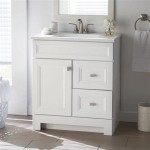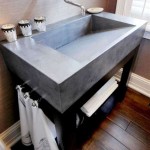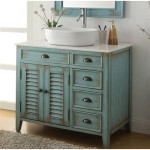Simple White Bathroom Vanity: A Guide to Timeless Elegance and Practicality
The simple white bathroom vanity stands as a cornerstone of contemporary bathroom design. Its versatility, clean aesthetic, and ability to complement various styles make it a popular choice for homeowners and designers alike. This article will explore the benefits, considerations, and options associated with integrating a simple white bathroom vanity into a bathroom space.
A bathroom vanity is more than just a sink base; it serves as a focal point, providing storage, concealing plumbing, and enhancing the overall appearance of the room. The color white, in particular, offers a unique set of advantages, making it a practical and visually appealing selection for this crucial bathroom element.
Key Point 1: The Enduring Appeal of White
White is often associated with cleanliness, purity, and spaciousness. These qualities make it an ideal color choice for bathrooms, where hygiene and a sense of openness are highly valued. A white vanity can brighten a room, reflecting light and creating the illusion of a larger area. This is particularly beneficial in smaller bathrooms or those with limited natural light.
Furthermore, white is a neutral color, which means it effortlessly pairs with a wide range of colors and materials. Whether the bathroom features cool blues and grays, warm beiges and browns, or even bolder accent colors, a white vanity will seamlessly integrate into the design scheme. This versatility eliminates the need to completely overhaul the bathroom's color palette if the vanity is replaced or the design is updated.
The timeless nature of white ensures that a white vanity will remain stylish for years to come. Unlike trendy colors that may fall out of favor, white remains a classic choice that is unlikely to appear dated. This makes it a wise investment for homeowners who want a bathroom that will stand the test of time.
White vanities can be incorporated into various design styles, from traditional to modern. A simple white vanity with shaker-style doors and classic hardware can easily fit into a traditional bathroom, while a sleek, minimalist white vanity with clean lines and a floating design will complement a modern aesthetic. The adaptability of white allows homeowners to personalize their bathrooms without being constrained by the color of the vanity.
Finally, white surfaces are relatively easy to clean and maintain. Dirt and grime are more visible on white, prompting more frequent cleaning, which contributes to a more hygienic bathroom environment. While some may be concerned about staining, modern white vanities are often constructed from materials that are resistant to staining and can be easily wiped clean.
Key Point 2: Material Selection and Durability
The longevity and functionality of a white bathroom vanity hinge significantly on the material used in its construction. Common materials include solid wood, plywood, MDF (Medium-Density Fiberboard), and particleboard. Each material possesses its own set of characteristics, affecting aspects such as durability, moisture resistance, and cost.
Solid wood is generally considered the most durable and aesthetically pleasing option. It is resistant to warping and cracking, and it can be easily repaired if damaged. However, solid wood vanities tend to be more expensive than those made from other materials. Furthermore, solid wood can be susceptible to moisture damage if not properly sealed and maintained.
Plywood is a more affordable alternative to solid wood. It is made from layers of wood veneer glued together, providing good strength and stability. Plywood is also less prone to warping than solid wood. However, plywood edges can be susceptible to chipping if not properly finished.
MDF is a manufactured wood product made from wood fibers and resin. It is a smooth, uniform material that is easy to paint and finish. MDF is also less expensive than solid wood and plywood. However, MDF is more susceptible to moisture damage than solid wood and plywood, so it is important to choose an MDF vanity that is specifically designed for bathroom use.
Particleboard is the least expensive option, but it is also the least durable. It is made from wood chips and resin, and it is not as strong or moisture-resistant as solid wood, plywood, or MDF. Particleboard vanities are best suited for bathrooms with low humidity levels.
In addition to the core material, the finish of the vanity is also important for durability. A high-quality paint or sealant will protect the vanity from moisture and scratches. Consider selecting a paint that is specifically formulated for bathrooms, as these paints are typically more resistant to mold and mildew.
The hardware, such as knobs and pulls, should also be durable and resistant to corrosion. Stainless steel or brushed nickel hardware are good choices for bathrooms, as they are less likely to rust or tarnish.
Key Point 3: Design Styles and Configurations
White bathroom vanities are available in a wide variety of design styles and configurations, allowing homeowners to find the perfect vanity to suit their needs and preferences. Common design styles include shaker, contemporary, traditional, and farmhouse.
Shaker-style vanities are characterized by their clean lines and simple design. They typically feature recessed panel doors and drawers and are often painted white or off-white. Shaker vanities are a versatile choice that can complement a variety of bathroom styles.
Contemporary vanities are distinguished by their sleek, minimalist design. They often feature flat-panel doors and drawers, and may have a floating design, where the vanity is mounted to the wall, creating a sense of spaciousness. Contemporary vanities are often made from materials such as MDF or laminate, and they may have a high-gloss finish.
Traditional vanities are characterized by their ornate details and classic styling. They often feature raised panel doors and drawers, and may have decorative moldings and carvings. Traditional vanities are typically made from solid wood or plywood, and they may have a stained or painted finish.
Farmhouse vanities are inspired by the rustic charm of farmhouses. They often feature distressed finishes, open shelving, and apron-front sinks. Farmhouse vanities are typically made from solid wood or reclaimed wood, and they may have a painted or stained finish.
In addition to design style, vanities are also available in a variety of configurations. Single-sink vanities are ideal for smaller bathrooms, while double-sink vanities are a good choice for larger bathrooms or for couples who share a bathroom. Corner vanities can maximize space in small bathrooms, while wall-mounted vanities can create a more open and airy feel.
When choosing a vanity configuration, it is important to consider the available space in the bathroom, as well as the storage needs. Vanities with drawers provide easy access to frequently used items, while vanities with cabinets offer more storage space for larger items. Some vanities also have open shelving, which can be used to display decorative items or store towels.
The countertop material is also an important consideration. Common countertop materials include granite, marble, quartz, and laminate. Granite and marble are natural stone materials that are durable and beautiful, but they can be expensive and require regular sealing. Quartz is a manufactured stone material that is durable and low-maintenance, and it is available in a wide variety of colors and patterns. Laminate is the most affordable option, but it is not as durable as granite, marble, or quartz.
Finally, consider the plumbing requirements when choosing a vanity. Some vanities require the plumbing to be located in a specific area, so it is important to ensure that the vanity is compatible with the existing plumbing. It may be necessary to hire a plumber to move the plumbing if the vanity is not compatible.
In summary, selecting the right simple white bathroom vanity involves careful consideration of several factors, including the material, design style, configuration, and countertop material. By taking these factors into account, homeowners can choose a vanity that is both aesthetically pleasing and functional, enhancing the overall appeal and practicality of their bathroom space.
:strip_icc()/white-bathroom-ideas-11-katie-leclercq-eclectic-4dd82213f26240569ee79919b40400e2.jpeg?strip=all)
33 White Bathroom Ideas That Are Simple Sophisticated

Simple Design Tips For All White Bathrooms The Greenspring Home

Simple Classic Bathroom White Designs Vanity Interior

Diamond Now Hayes 31 In White Single Sink Bathroom Vanity With Cultured Marble Top The Vanities Tops Department At Com
:max_bytes(150000):strip_icc()/bath_4-b1b6196a1fec470f8881ced0b5cd62cc.jpeg?strip=all)
22 White Bathroom Ideas To Keep The Room Lively

Simple Design Tips For All White Bathrooms The Greenspring Home Small Bathroom Decor Apartment

Bathroom Vanity Ideas The Home Depot

Best Luxury Simple Modern White Bathroom Vanity China Cabinets And Vanities Made In Com

Maximum Home Value Bathroom Projects Counters And Vanity

Image Result For Long Double Vanity Design Ideas Decorating Small White Bathroo Bathroom Designs Remodel Bathrooms
Related Posts







